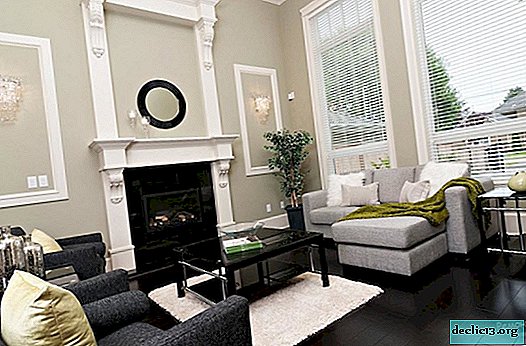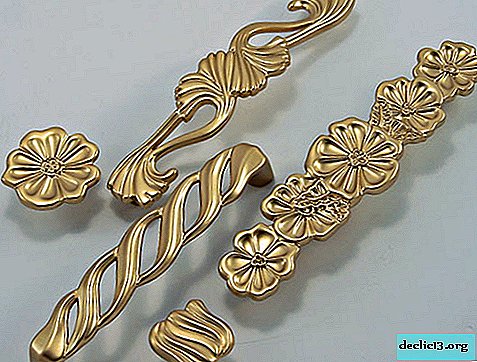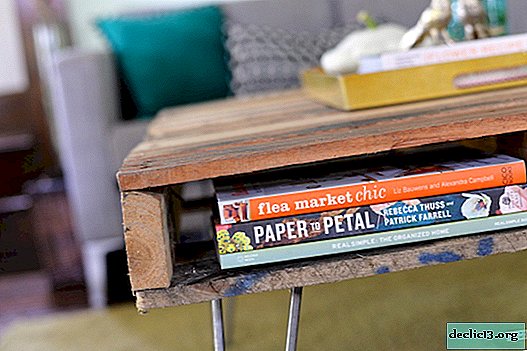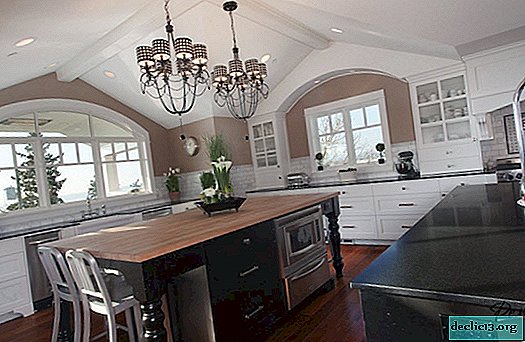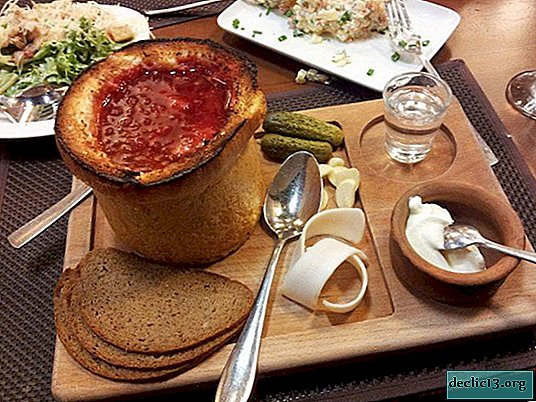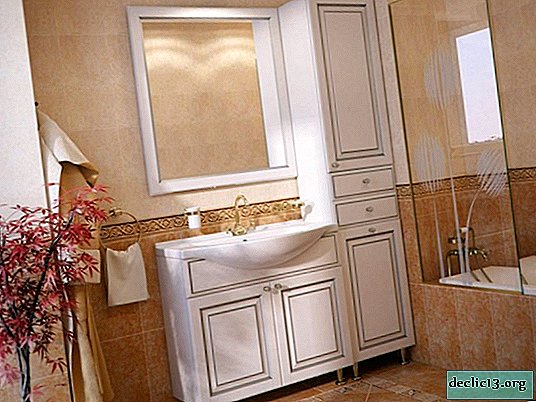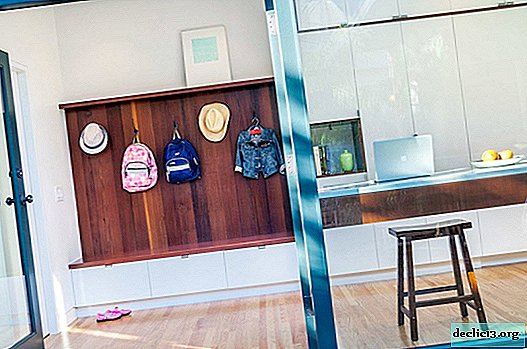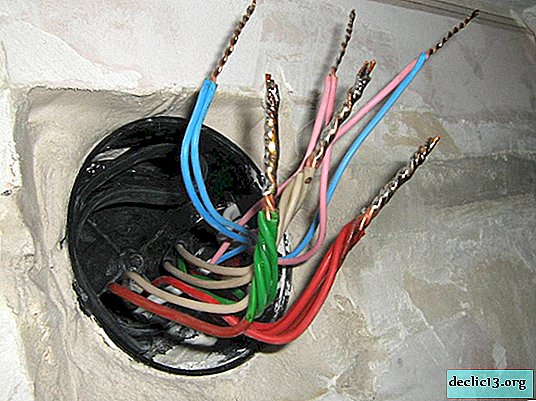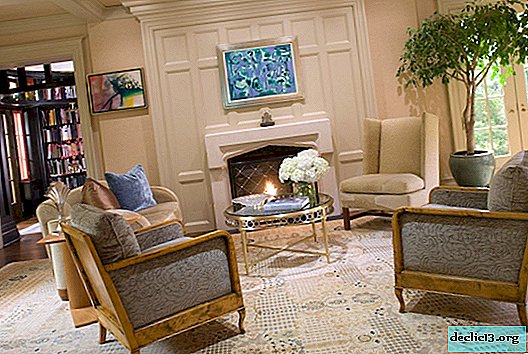Mirror walls in the interior: all the nuances
The attitude to such an object as a mirror has always been far from unambiguous. This is one of the most mystical objects of our life: according to old popular beliefs, a person and his reflection in the mirror are connected by a magical connection. In ancient myths and legends, mirrors can be misleading and discover the truth, send a person on a journey through time, open the door to the other world (parallel) world and return it back. Over time, the mystery of the mirror does not fade: in addition to its main function - to demonstrate the appearance of a person - mirrors serve as decorative elements in the design of a living room and are capable of much, albeit not quite magically.
The mirror wall in the interior is both an original design decision and a way to increase the space in the apartment.
To visually increase the space, not separate mirrors are used, but whole mirror walls. This is a fairly large vertical surface area, filled with mirror panels, tiles or panels. Using mirror walls, you can achieve a visual increase in the area of housing and create a feeling of additional lighting:
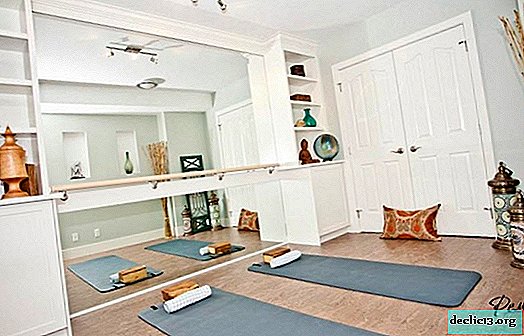
You can decorate a wall in a room using mirrors in many ways. For an emphasized elegant interior, the most suitable way of placement will be mirrors of the correct geometric shape in baguette frames in the style of the whole room:

However, do not forget about some "cunning" mirrors. This is a fairly complex tool in interior design. The poor location of the mirror wall in a small room will not increase, but will reduce its volume. A panel located in the head of the bed in a narrow rectangular room reflects the opposite wall and forms an enclosed space. Tinted mirrors also will not create a feeling of spaciousness:

A mirror wall can significantly increase the space in those cases when the interior of the room is made in very light colors, and a window or a wide doorway is displayed in the mirror:



Mirror panels
An artistic composition consisting of a variety of mirror elements is called a mirror panel. It serves as a decoration for any decor. To compose such a composition, mirror tiles of different sizes and colors are used. The panel can occupy the entire surface of the wall or only part of it.
In the classic version, these can be traditional regular rectangles located from floor to ceiling, which will expand the room in height and width:


In rooms with custom design, it is appropriate to combine mirror panels with other decorative details. For example, a mirror surface can be decorated with wooden plates or slats located horizontally:


In a vintage interior, where there are several old decor elements, it is appropriate to use a mirror panel assembled from plates in aged frames. This way will create the desired style direction in the interior of the room and combine vintage decorations:

For the interior in the Victorian style, you can choose an extraordinary way of decorating a mirror panel with elegant figured patterns. In the same style, you can issue an interior door:

Faceted Mirror Tile
One of the most common methods of mirror panels is the use of faceted mirrors. Facetting is a method of decorative finishing the edges of mirrors or glass, as a result of which a beveled face is formed. Tile with bevel edge creates a unique and exclusive interior of the room. Most often, such panels are used in bathrooms, because mirror tiles are resistant to moisture, chemical attack and pollution. When choosing a composition, one must take into account the fact that the care of the mirror surface must be very thorough in order to maintain it in good condition.
In combination with ceramic or marble wall decoration, mirrored panels with facet tiles create a unique interior, visually expand the space and fill the room with light:


Mirror headboard
In bedrooms, the interior is unthinkable without mirrors. The most popular is the arrangement of mirrors at the head of the bed. If there is a niche in this part of the room, then the mirror panel will visually deepen the space and give originality to the interior:

A mirror wall located in a square room at the base of the bed will make the bedroom more spacious and bright, provided that the mirrors reflect a glass front door overlooking the garden:

The head of the bed does not have to be completely filled with a mirror panel. If the bedroom does not need visual expansion or lighting of the space, it is enough to place symmetrically two small mirrors enclosed in original frames, suitable in texture and color to the entire interior:

In bathrooms, the most common arrangement of mirror surfaces is the wall above the sink: this is a time-tested and convenient method. The mirror wall can be placed on the entire wall. This will sufficiently increase the volume of the room:


In a bathroom with a sufficiently large area and a non-standard layout, you can place several mirror panels. It is important to “fragment” the space in order to avoid the effect of the “looking glass”; for this, it is advisable to supplement the small mirror panel above the sink with another, larger one enclosed in a frame:

Mirror walls in the interior of an apartment or house look great, the main thing is to choose its configuration, location, decor and interior style correctly.
Tips for the location of mirror walls in the interior:
- it is important to remember that mirrors double the display, so do not place massive furniture and other large items near the mirror wall;
- a mirror wall is able to visually expand the space if it reflects natural and artificial light sources;
- It is not recommended to place a mirror wall opposite other mirrors or the front door.

